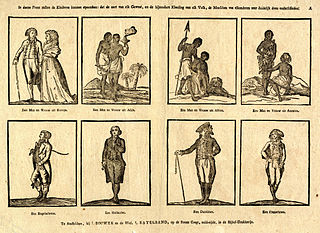
Forensic psychology is the practice of psychology applied to the law. Forensic psychology is the application of scientific knowledge and methods to help answer legal questions arising in criminal, civil, contractual, or other judicial proceedings. Forensic psychology includes research on various psychology-law topics, such as jury selection, reducing systemic racism in criminal law, eyewitness testimony, evaluating competency to stand trial, or assessing military veterans for service-connected disability compensation. The field traces its roots to contributions by Wilhem Wundt, Hugo Münsterberg, and Sigmund Freud among others. Contemporary definitions of forensic psychology recognize that several subfields of psychology apply "the scientific, technical, or specialized knowledge of psychology to the law." The American Psychological Association's Specialty Guidelines for Forensic Psychologists reference several psychology subdisciplines, such as social, clinical, experimental, counseling, and neuropsychology.
A double standard is the application of different sets of principles for situations that are, in principle, the same. It is often used to describe treatment whereby one group is given more latitude than another. A double standard arises when two or more people, groups, organizations, circumstances, or events are treated differently even though they should be treated the same way. A double standard "implies that two things which are the same are measured by different standards".

The halo effect is the tendency for positive impressions of a person, company, country, brand, or product in one area to positively or negatively influence one's opinion or feelings in other areas. Halo effect is "the name given to the phenomenon whereby evaluators tend to be influenced by their previous judgments of performance or personality." The halo effect is a cognitive bias which can possibly prevent someone from accepting a person, a product or a brand based on the idea of an unfounded belief on what is good or bad.

A job interview is an interview consisting of a conversation between a job applicant and a representative of an employer which is conducted to assess whether the applicant should be hired. Interviews are one of the most popularly used devices for employee selection. Interviews vary in the extent to which the questions are structured, from a totally unstructured and free-wheeling conversation to a structured interview in which an applicant is asked a predetermined list of questions in a specified order; structured interviews are usually more accurate predictors of which applicants will make suitable employees, according to research studies.

The gender pay gap in the United States is a measure between the earnings of male and females in the workforce. When calculating the pay gap, non-adjusted versus adjusted pay gap is utilized. The adjusted pay gap takes into consideration the differences in hours worked, occupations chosen, education and job experience, whereas the non-adjusted pay gap is the overall difference of gross hourly earnings of males and females in the United States. The non-adjusted average female annual salary is around 80% of the average male salary, compared to 95% for the adjusted average salary.
Recognition of prior learning (RPL), prior learning assessment (PLA), or prior learning assessment and recognition (PLAR), describes a process used by regulatory bodies, adult learning centres, career development practitioners, military organizations, human resources professionals, employers, training institutions, colleges and universities around the world to evaluate skills and knowledge acquired outside the classroom for the purpose of recognizing competence against a given set of standards, competencies, or learning outcomes. RPL is practiced in many countries for a variety of purposes, for example an individual's standing in a profession, trades qualifications, academic achievement, recruitment, performance management, career and succession planning.
Competence is the set of demonstrable characteristics and skills that enable and improve the efficiency or performance of a job. Competency is a series of knowledge, abilities, skills, experiences and behaviors, which leads to effective performance in an individual's activities. Competency is measurable and can be developed through training. The term "competence" first appeared in an article authored by R.W. White in 1959 as a concept for performance motivation. In 1970, Craig C. Lundberg defined this concept as "Planning the Executive Development Program". The term gained traction in 1973 when David McClelland wrote a seminal paper entitled, "Testing for Competence Rather Than for Intelligence". The term, created by McClelland, was commissioned by the State Department to explain characteristics common to high-performing agents of embassy, as well as help them in recruitment and development. It has since been popularized by Richard Boyatzis, and many others including T.F. Gilbert (1978), who used the concept in performance improvement. Its uses vary widely, which has lead to considerable misunderstanding.
Cultural competence, also known as intercultural competence, is a range of cognitive, affective, and behavioural, linguistic, skills that lead to effective and appropriate communication with people of other cultures. Intercultural or cross-cultural education are terms used for the training to achieve cultural competence.

In social psychology, a stereotype is a generalized belief about a particular category of people. It is an expectation that people might have about every person of a particular group. The type of expectation can vary; it can be, for example, an expectation about the group's personality, preferences, appearance or ability. Stereotypes are sometimes overgeneralized, inaccurate, and resistant to new information, but can sometimes be accurate.

Self-image is the mental picture, generally of a kind that is quite resistant to change, that depicts not only details that are potentially available to an objective investigation by others, but also items that have been learned by persons about themselves, either from personal experiences or by internalizing the judgments of others.
Feminist psychology is a form of psychology centered on social structures and gender. Feminist psychology critiques historical psychological research as done from a male perspective with the view that males are the norm. Feminist psychology is oriented on the values and principles of feminism.

Expectation states theory is a social psychological theory first proposed by Joseph Berger and his colleagues that explains how expected competence forms the basis for status hierarchies in small groups. The theory's best known branch, status characteristics theory, deals with the role that certain pieces of social information play in organizing these hierarchies. More recently, sociologist Cecilia Ridgeway has utilized the theory to explain how beliefs about status become attached to different social groups and the implications this has for social inequality.
Ambivalent prejudice is a social psychological theory that states that, when people become aware that they have conflicting beliefs about an outgroup, they experience an unpleasant mental feeling generally referred to as cognitive dissonance. These feelings are brought about because the individual on one hand believes in humanitarian virtues such as helping those in need, but on the other hand also believes in individualistic virtues such as working hard to improve one's life.
Role congruity theory proposes that a group will be positively evaluated when its characteristics are recognized as aligning with that group's typical social roles. Conversely, the stereotype fit hypothesis suggests that group members will experience discrimination in different social roles or positions to the extent that their group stereotypically does not have characteristics associated with success in the position. For instance, women may not be considered a good fit for a managerial position if being aggressive is seen as a characteristic of a successful manager. Due to stereotype fit, men may be considered more qualified for the position and are not only more likely to be hired, but are also more likely to be promoted as well.
In psychology, a first impression is the event when one person first encounters another person and forms a mental image of that person. Impression accuracy varies depending on the observer and the target being observed. First impressions are based on a wide range of characteristics: age, race, culture, language, gender, physical appearance, accent, posture, voice, number of people present, economic status, and time allowed to process. The first impressions individuals give to others could greatly influence how they are treated and viewed in many contexts of everyday life.
In social psychology, the stereotype content model (SCM) is a model, first proposed in 2002, postulating that all group stereotypes and interpersonal impressions form along two dimensions: (1) warmth and (2) competence.
The motherhood penalty is a term coined by sociologists who argue that in the workplace, working mothers encounter disadvantages in pay, perceived competence, and benefits relative to childless women. Specifically, women may suffer a per-child wage penalty, resulting in a pay gap between non-mothers and mothers that is larger than the gap between men and women. Mothers may also suffer worse job-site evaluations indicating that they are less committed to their jobs, less dependable, and less authoritative than non-mothers. Thus, mothers may experience disadvantages in terms of hiring, pay, and daily job experience. The motherhood penalty is not limited to one simple cause but can rather be linked to many theories and societal perceptions. However, one prominent theory that can be consistently linked to this penalty is the work-effort theory. It is also based on the mother's intersectionality. There are many effects developed from the motherhood penalty including wage, hiring, and promotion penalties. These effects are not limited to the United States and have been documented in over a dozen other industrialized nations including Japan, South Korea, The United Kingdom, The Netherlands, Poland, and Australia. The penalty has not shown any signs of declining over time.
In social psychology, a positive stereotype refers to a subjectively favourable belief held about a social group. Common examples of positive stereotypes are Asians with better math ability, African Americans with greater athletic ability, and women with being warmer and more communal. As opposed to negative stereotypes, positive stereotypes represent a "positive" evaluation of a group that typically signals an advantage over another group. As such, positive stereotypes may be considered a form of compliment or praise. However, positive stereotypes can have a positive or negative effect on targets of positive stereotypes. The positive or negative influence of positive stereotypes on targets depends on three factors: (1) how the positive stereotype is stated, (2) who is stating the positive stereotype, (3) in what culture the positive stereotype is presented.
Monica Rose Biernat is a social psychologist known for her research on social judgment, stereotyping, prejudice, and discrimination. She is a University Distinguished Professor of Psychology at the University of Kansas.







